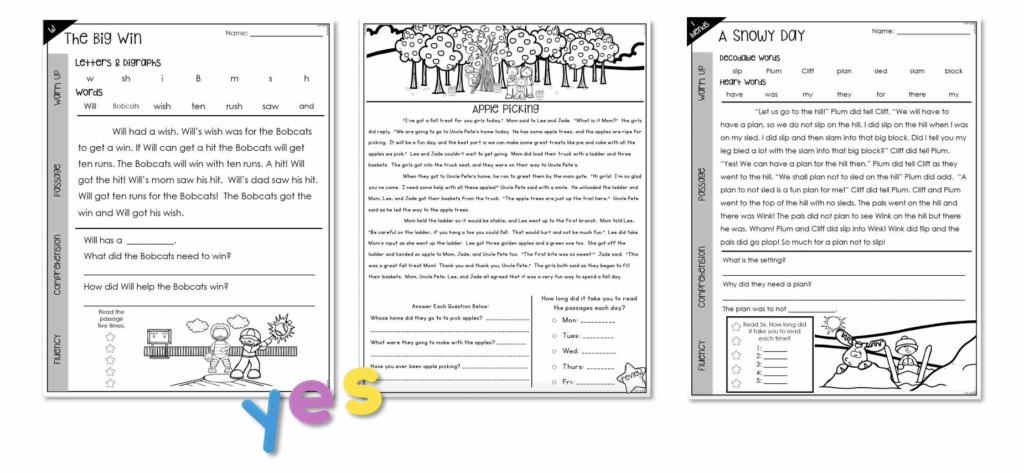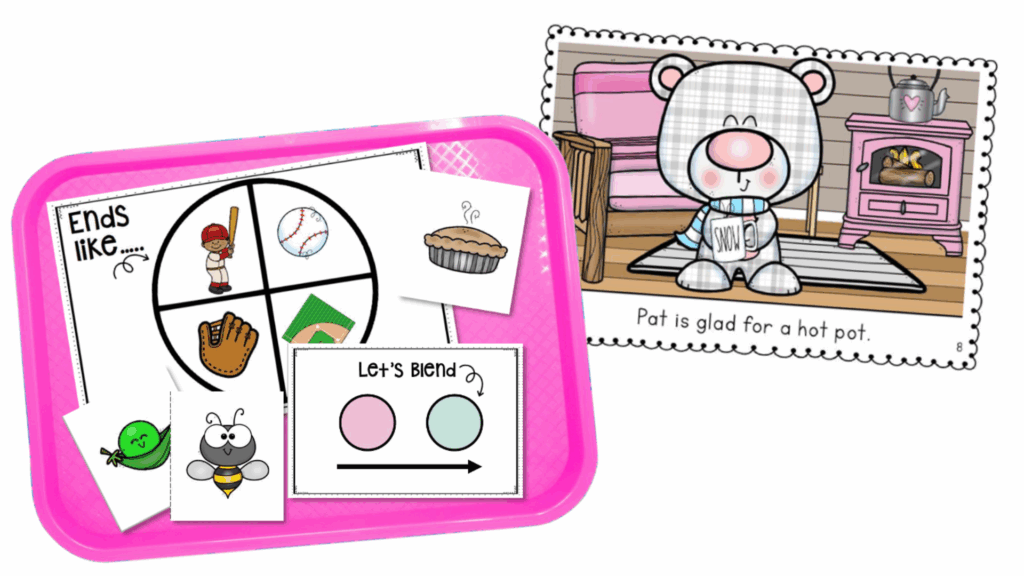Decodable Texts That Actually Work!
Ever feel like small group reading instruction time is a whirlwind of “Wait—what does she need again?” and “Where did I put those comprehension cards?” Same. 😅
Small group reading instruction can be one of the most powerful parts of your day—but only if you’re not drowning in planning, guessing what works, or trying to differentiate for five reading levels at once. I know this, because I have been there!

But in the middle of drowning, I knew that decodable books and passages aligned with the Science of Reading aren’t just a good idea… they’re a game-changer.
Let’s talk about how they can actually make your small groups smoother and your instruction more effective.
✅ Why Decodable Texts Are Essential—Especially Early in the Year
If you’ve got kids still guessing at words or struggling to blend sounds, decodable passages are your best friend. They give students a chance to apply what they’ve learned in phonics in real reading experiences—not just isolated words or flashcards.

But not all decodable texts are created equal. The best ones:
- Align with phonics skills that your students have been taught
- Provide fluency support without being overwhelming
- Include opportunities for comprehension—because reading is more than decoding
💡 What Makes a Great Decodable Text?
When you’re choosing decodable texts for small group instruction, keep an eye out for these must-haves:
- Targeted phonics patterns (not a random mix of sounds)
- Predictable structure that helps build confidence
- Built-in comprehension questions to check understanding
- Multiple formats like passages, readers, and fluency tracking
That last part is key—having the same text in multiple formats helps you differentiate and provide plenty of practice without reinventing the wheel.
🔁 Easy Small Group Routines That Stick
When you find a routine that works with your decodable texts, everything clicks. Here’s a go-to structure many teachers love:
- Phonemic Awareness Practice
- Fluency and Review
- Phonics Warm-Up – Quick review of target skill (2–3 mins)
- Reading – Read the decodable passage together, focusing on decoding
- Comprehension Check – Use the included questions for oral or written response
✨ Pro Tip: Keep the same structure each week. Just swap in a new passage that matches your current skill!

🔍 Real Talk: What Changed When I Started Using This Resource
I used to spend hours pulling random books, writing questions, and trying to remember which student was working on short vowels and which one was tackling digraphs.
Then I implemented this resource, and suddenly… small group time felt manageable. It includes:
- Over 100 decodable passages
- Decodable books, fluency trackers, and comprehension questions
- Alignment to Science of Reading principles
- Differentiation built-in (hello, time-saver 🙌)
I could print a week’s worth of small group plans in one prep session. And best of all? My students were reading confidently—and understanding what they read.
🗣️ Let’s Chat!
What’s the biggest challenge you face during small group reading?
Drop it in the comments or DM me—I’d love to hear what’s working (and what’s not) in your classroom.
📥 Ready to Simplify Your Small Groups?
Try a free passage or grab the full Science of Reading Decodable Passages & Readers with Comprehension resource here.
It’s everything you need for small groups that actually work—and kids who actually grow.
📥 Need help getting started?
Grab my FREE small groups quick start guide HERE! Your assessments, planning pages, and detailed instructions (plus so much more are included!)



No Comments